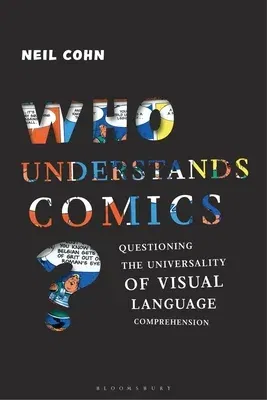Neil Cohn
(Author)Who Understands Comics?: Questioning the Universality of Visual Language ComprehensionPaperback, 12 November 2020

Qty
1
Turbo
Ships in 2 - 3 days
Only 2 left
Free Delivery
Cash on Delivery
15 Days
Free Returns
Secure Checkout

Print Length
256 pages
Language
English
Publisher
Bloomsbury Academic
Date Published
12 Nov 2020
ISBN-10
1350156043
ISBN-13
9781350156043
Description
Product Details
Author:
Book Format:
Paperback
Country of Origin:
US
Date Published:
12 November 2020
Dimensions:
21.34 x
13.72 x
1.78 cm
ISBN-10:
1350156043
ISBN-13:
9781350156043
Language:
English
Location:
New York
Pages:
256
Publisher:
Weight:
358.34 gm